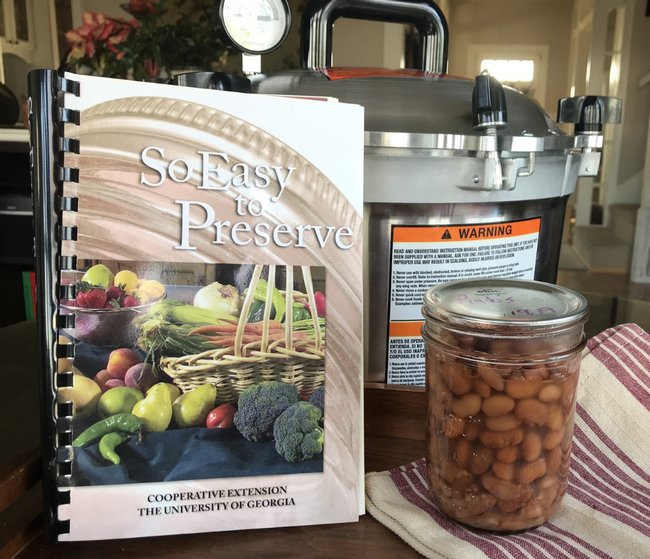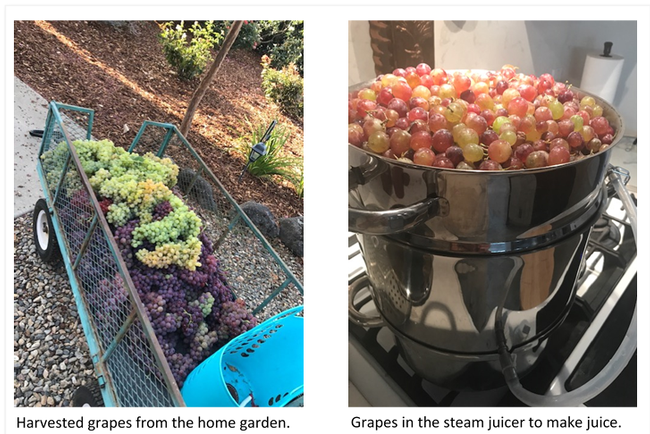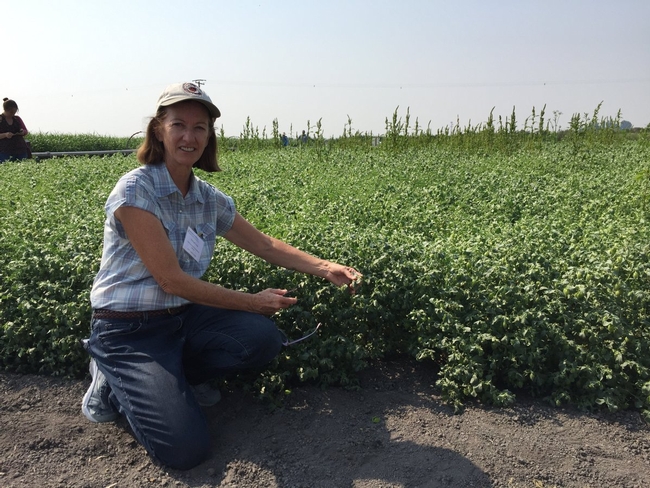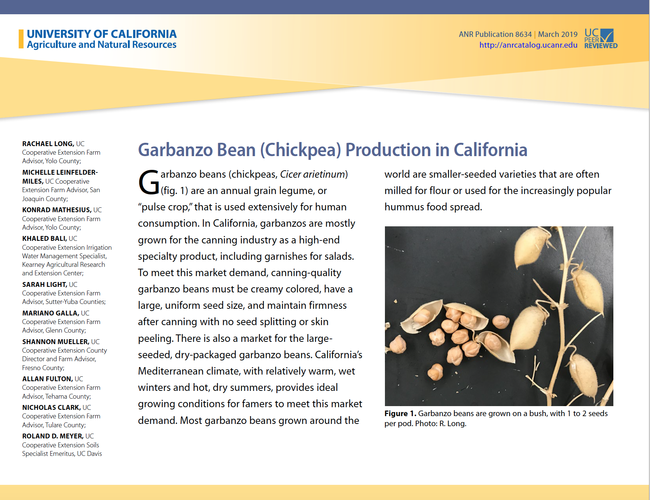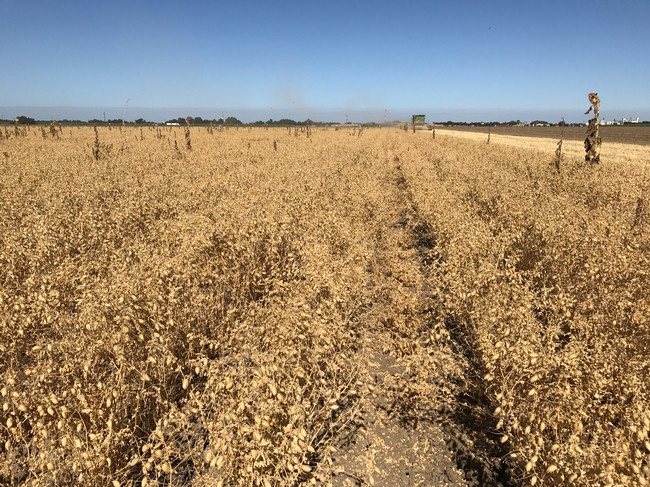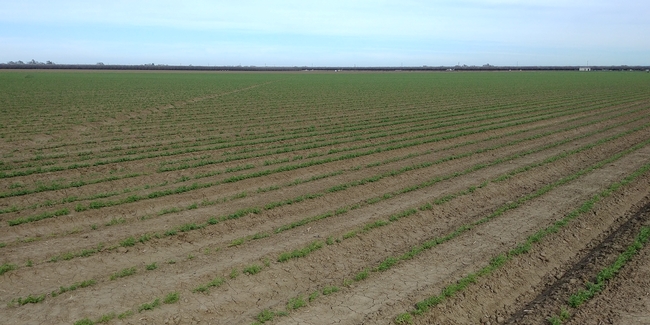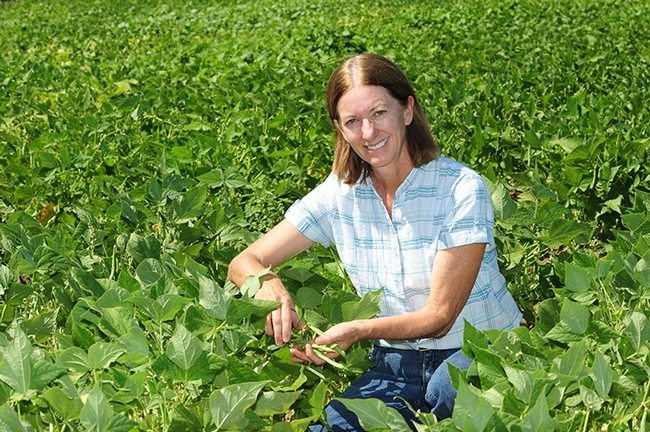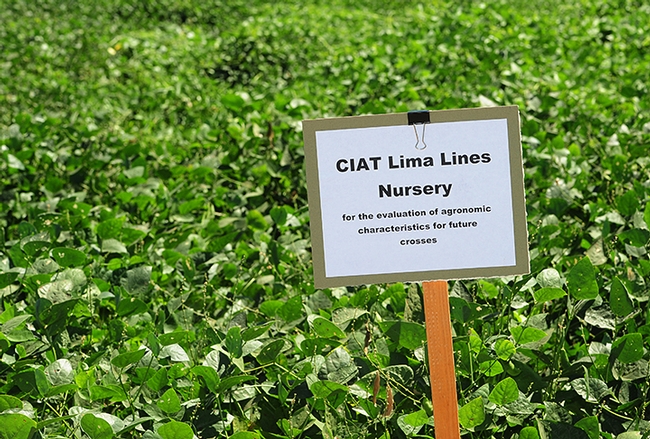
Posts Tagged: beans
Lovin' the Fava Beans
Every time we see honey bees pollinating fava bean blossoms, we think of actor Anthony...
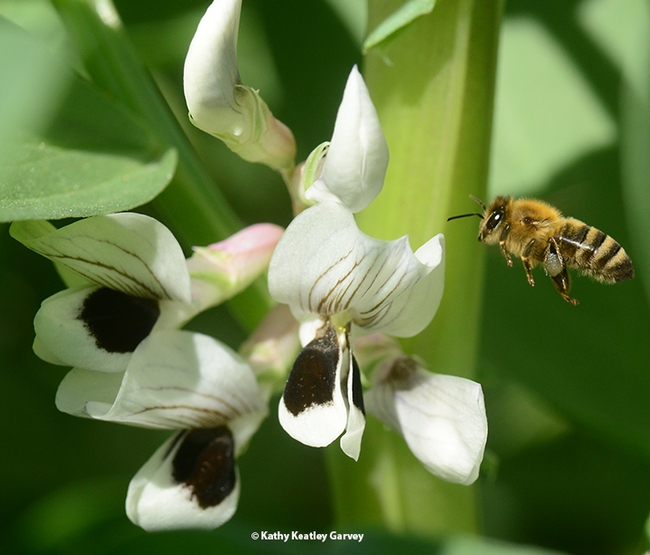
A honey bee heads for fava bean blossoms. Note the silver-gray pollen. (Photo by Kathy Keatley Garvey)
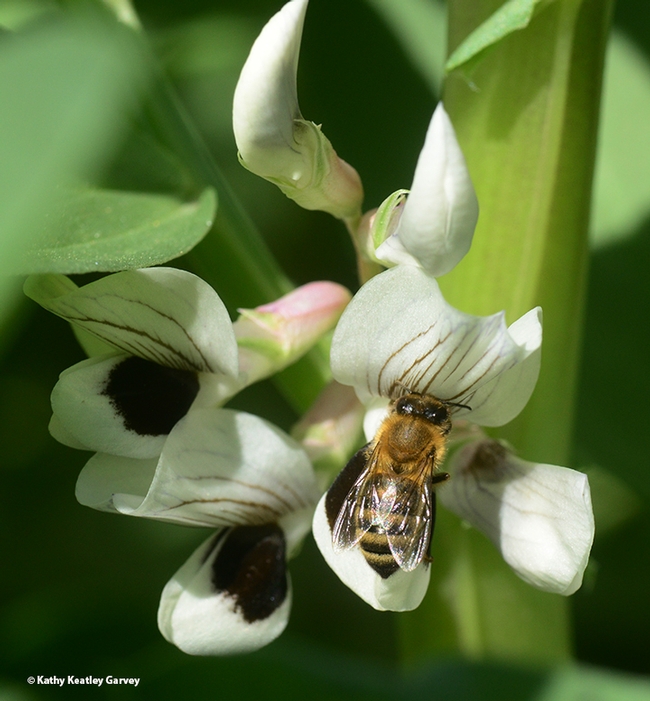
Success! A honey bee foraging on a fava bean blossom. (Photo by Kathy Keatley Garvey)
Home preservation for whole foods, plant-based lifestyles
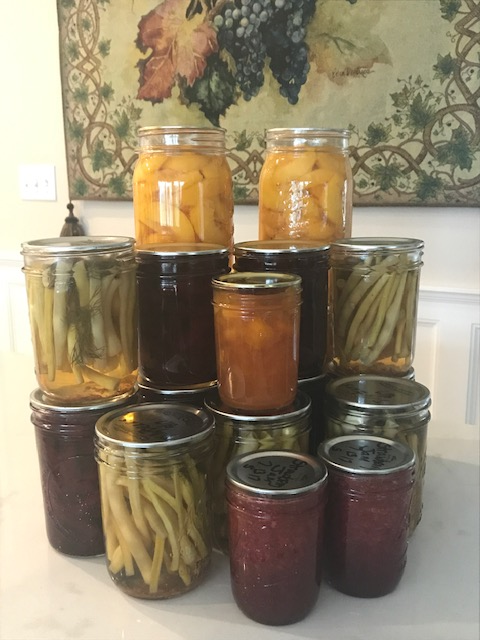
Recently there has been increasing interest and desire to grow and preserve our own produce. In addition, there has been an increase of health-conscious families turning to WFPB lifestyles. This UC Davis article explains the differences between vegan and WFPB diets.
Home food preservation is a natural accompaniment to this lifestyle, however, misconceptions about the benefits of home canning are often overlooked for the WFBP lifestyle and therefore not utilized. There is a misconception that preserved canned fruits are loaded with sugar. Unlike vegan diets, WFPB diets do not include sugar, however, WFPB diets do include raw honey if sweeteners are desired. The UC Davis Integrative Medicine article, The real truth about sugar, supports the choice to preserve fruits without the addition of sugar. And, although unprocessed foods are encouraged, minimally processed foods like home preserving, is acceptable. Here is a great article from UC Davis Integrative Medicine - What about processed foods?
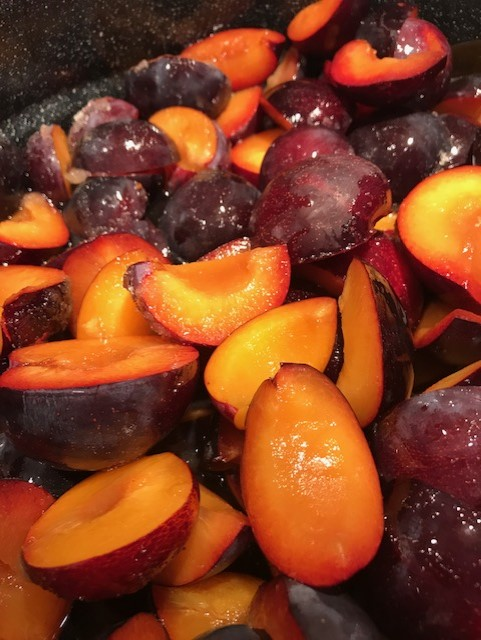
Beans are a protein staple for the WFPB lifestyle. A UC Davis Integrative Medicine article explains Why beans are best and are a healthful choice for a meal or a snack. Home canning beans saves time and money. This UCCE video by Dustin Blakey is an excellent demonstration for pressure canning beans. By following the recipe in the book So Easy to Preserve, for pressure canning beans, my beans always come out safe and perfect. Before serving, I bring the beans to a boil for 10 minutes and season for my desired taste.
Being a certified UC Master Gardener provided me the skills and knowledge to successfully grow my own produce. I often referr to my garden as “My Victory Garden for Health.” All the produce that is not eaten fresh is either canned, dehydrated or frozen using skills I learned as a UC Master Food Preserver.
We grew a large 4' x 16' bed of onions. Some onions were dehydrated, which was a great advantage. Snap peas, bush beans, asparagus, beets for pickling, carrots, tomatoes, and sweet corn were either pressure canned, blanched or frozen. Vegetable soup was made and canned using the So Easy to Preserve instructions.
I am not advocating that this lifestyle is for everyone since after almost one year I found my way to a hybrid form of WFPB. However, I will continue to use my UC Master Food Preserver skills to home preserve produce that is sugar free and healthy, knowing that my home preserved food is safe since I have followed recipes and procedures tested for home food preservation.
For more information about the UC Master Food Preserver Program, including the Food Preservation Video Library, visit mfp.ucanr.edu.
Garbanzo bean production guide published for small but thriving industry
Try topping your salads with some tasty garbanzo beans this summer. Not only are they a healthful source of protein, vitamins and minerals, but the ‘green' legumes are produced in California with a small environmental footprint!
California farmers grow about 10,000 acres of garbanzo beans, mostly for the canning market.
“We have the right growing conditions, including cool, wet winters and hot, dry summers, to produce high-quality, large, creamy-white garbanzo beans for high-end markets, like salad bars,” says Rachael Long, UC Cooperative Extension farm advisor for Sacramento, Solano and Yolo counties. “Other areas, such as Washington State, grow a smaller garbanzo bean destined for processing, like hummus, a creamy vegetable spread.”
Garbanzos, also called chickpeas, are originally from the Middle East, where they have been farmed since ancient times. In California, their heritage dates back to the Spanish Mission era. California garbanzo beans are grown in the winter time, minimizing water use. The nitrogen-fixing legumes supply their own nitrogen and require few pesticides for production as the plants secrete acids that ward off insect pests.
To assist farmers in production practices, Long led a team of researchers to produce a new 2019 Garbanzo (chickpea) production manual for the dry bean industry in California.
“This is a great resource for farmers and the industry,” says Nathan Sano, manager for the California Dry Bean Advisory Board, about the publication, which covers garbanzo production from seed selection to harvesting and markets.
The manual identifies garbanzo varieties that have pest and disease resistance. Nutrient management information helps growers comply with regulations for protecting groundwater from nitrate. The irrigation section provides tables on water needs for crops grown in different areas of California, helping to conserve water.
“Our UC ANR Grain-Legume workgroup started this production manual back in 1992,” Long said. “I'm thankful for a strong team and grower and industry input and support. I also appreciate the incredible mentoring and reviews of this manual by Roland Meyer, UC Cooperative Extension emeritus soil specialist, and a fantastic editor, UC Cooperative Extension agronomy specialist Dan Putnam, to make this publication a reality. This was a big group effort, and I appreciate everyone's contributions to make this a valuable resource for the California dry bean industry.”
The California garbanzo bean production manual is available for free online at https://anrcatalog.ucanr.edu/Details.aspx?itemNo=8634.
In addition to Long and Meyer, co-authors include UC Cooperative Extension farm advisors Michelle Leinfelder-Miles, Konrad Mathesius, Sarah Light, Mariano Galla, Shannon Mueller, Allan Fulton and Nick Clark, and UC Cooperative Extension irrigation specialist Khaled Bali.
UC estimates costs and returns for growing garbanzo beans
The UC Agriculture and Natural Resources' Agricultural Issues Center has released two new studies on the estimated costs and returns of producing garbanzo beans, also known as chick peas, in the Sacramento and San Joaquin Valleys.
“Although acreage is relatively small, garbanzos are an important crop because California growers produce the large, cream-colored seed that's used for the canning industry, often used for garnishes for salads,” said Rachael Long, UC Cooperative Extension farm advisor serving Sacramento, Solano and Yolo counties.
The studies estimate the cost of producing garbanzo beans on 200 acres as part of a row crop rotation, using subsurface drip irrigation. A three-row bed tillage implement shallowly chisels, tills and reshapes the beds, avoiding disturbance of the buried drip tape left in place. Planting of seed treated for fungal and seedling diseases, Ascochyta rabiei, Rhizoctonia and Pythium, into residual soil moisture occurs in December. Seeding rates for the garbanzo beans are 85 pounds per acre.
Input and reviews were provided by UC ANR Cooperative Extension farm advisors and other agricultural associates. Assumptions used to identify current costs for the garbanzo bean crop, material inputs, cash and non-cash overhead. A ranging analysis table shows profits over a range of prices and yields. Other tables show the monthly cash costs, the costs and returns per acre, hourly equipment costs, and the whole farm annual equipment, investment and business overhead costs.
“The importance of these studies right now is that they are currently being used to help secure USDA crop insurance for garbanzo production, expected in 2020,” Long said.
The new studies are titled “Sample Costs to Produce Garbanzo Beans (Chick Peas), in the Sacramento and Northern San Joaquin Valleys – 2018” and “Sample Costs to Produce Garbanzo Beans (Chick Peas), in the Southern San Joaquin Valley – 2018.”
Both studies can be downloaded from the UC Davis Department of Agricultural and Resource Economics website at http://coststudies.ucdavis.edu. Sample cost of production studies for many other commodities are also available at the website.
For additional information or an explanation of the calculations used in the studies, contact the Agricultural Issues Center at (530) 752-4651 or the local UCCE Farm Advisors; Sarah Light, selight@ucanr.edu, Rachael Long, rflong@ucanr.edu, Michelle Leinfelder-Miles, mmleinfeldermiles@ucanr.edu, or Nicholas E. Clark, neclark@ucanr.edu.
'Know beans' about a delicious Thanksgiving
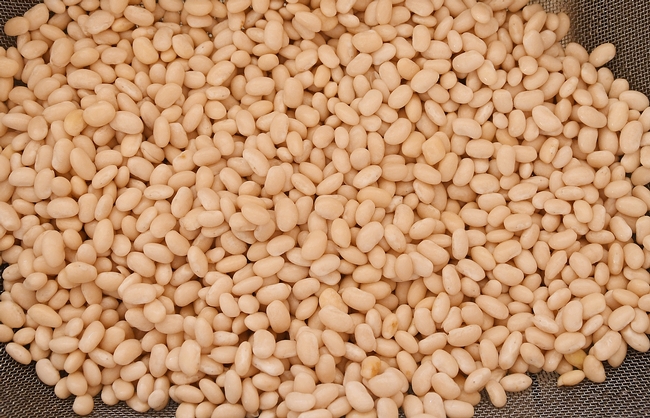
Beans are one of civilization's earliest cultivated crops, dating back to the early seventh millennium BCE. Today there are more than 40,000 varieties of beans worldwide.
Beans can also have a place on the Thanksgiving table. The Maple Spice blog for vegans shares a meat-free substitute for turkey that combines mashed white canelli beans, nutritional yeast, vital wheat gluten and spices to create a loaf that slices like turkey breast. UC CalFresh, one of the UC Agriculture and Natural Resources' nutrition education programs, developed a recipe for black bean and mango salad that makes a healthful and colorful accompaniment to a traditional Thanksgiving meal. (The recipe is below.)
"Not only are beans a healthy food choice, but they are also a healthy choice for our world," said UC Cooperative Extension advisor and dry bean expert Rachael Freeman Long. "Beans fix most of their own nitrogen so require fewer inputs for production compared to other sources of protein and they're cheap! Plus some, like garbanzos, are grown during the wintertime, so they're less dependent on irrigation."
The different varieties of beans include garbanzos (chickpeas) as well as black eyes, limas, and common beans like pintos and kidneys.
You probably won't find a bigger fan of beans than Rachael Long. "I eat them at least once a week or more," she said. "I love going on our Cal Beans website and getting new recipes. Summer time, I love beans on my salad, especially garbanzos. At this time of year, I love soups with beans. My favorite is the kale white bean sausage soup. If I want to go vegetarian, I'll leave out the sausage or sometimes fry up some tofu sausage for flavor. And, it just so happens that this is the soup in the current bean blog. I got the original recipe from one of our nutrition staff at our office."
Long says that Cal Beans is an important site for bean growers and industry folks, too. "It's supported by the California Dry Bean Advisory Board, an important funding source for my work. Right now, I have a grant to look at seed moisture and quality at harvest (possibly drying down seed too much at harvest results in internal injury to planting beans (seed stock)."
What do you know about beans? Do you know that California grows the canning quality beans?
"We have the perfect weather conditions for those large, creamy beige-colored beans," Long said. "Other states like Washington grow about 100,000 acres of garbanzos for humus (but a lower quality bean and we can't compete with their free water via rainfall."
California farmers supply virtually all of our country's dry lima beans, Long notes. In 2012, California farmers grew about 23,000 acres of baby and large limas, valued at $30 million that year, according to the National Agricultural Statistics Service.
Long has authored two UC ANR manuals about beans (Lima Bean Production in California and Common Dry Bean Production Manual) and is just finishing the garbanzo production manual (it's in peer review).
"Lima beans are a major dry bean crop for California, representing a significant portion of the total dry bean acreage in 2013," she wrote in the Lima Bean Production in California. "Lima beans are primarily grown for the dried edible white bean in California, although a limited but stable acreage is also for seed production. As with all dry beans, limas are a nutritional and healthy food choice, being an excellent source of protein, fiber, vitamins, and minerals. Lima beans are also an important rotation crop for farmers because the plants fix nitrogen, add biomass to the soil, and require relatively few pesticides."
Lima beans belong to the species Phaseolus lunatus, distinct from the common bean, P. vulgaris.
"Common dry beans include the market classes kidney, cranberry, pink, black, white, yellow, pinto, and red, all of which are different types of a single species (Phaseolus vulgaris) that was originally domesticated several thousand years ago in the areas that are now Mexico and South America," Long wrote in the Common Dry Bean Production Manual. "Natural selection and breeding programs lead eventually to the current market classes, which are mainly distinguished by seed size, color, and shape, and plant growth habit. Currently, there are no commercially available genetically modified varieties of P. vulgaris."
"Dry beans," Long points out, "are grown in California mainly for human consumption, though a limited but stable acreage is dedicated to seed production. Dry beans are nutritious: they are high in starch, protein, and dietary fiber, they have no cholesterol, and they are an excellent source of iron, potassium, selenium, molybdenum, thiamine, vitamin B6, and folic acid. The U.S. Department of Agriculture considers dry beans to be both a vegetable and a protein source."
Rosane Oliveira, director of the UC Davis Integrative Medicine Program and an adjunct assistant professor in the UC Davis School of Medicine's Department of Health Sciences, recently praised beans as one of the "Fab 4" plant foods in her "21-Day Food Challenge" blog.
Beans are brilliant, Oliveira says, because they:
Indeed, there's even a National Bean Day, observed annually on Jan. 6. Want to know more about beans? You'll find a wealth of information about dry beans from the U.S. Dry Bean Council.
Bottom line: Beans should be an important part of your diet. You can call them "nutritious," you can call them "delicious," or you can call them "brilliant." They're all three.
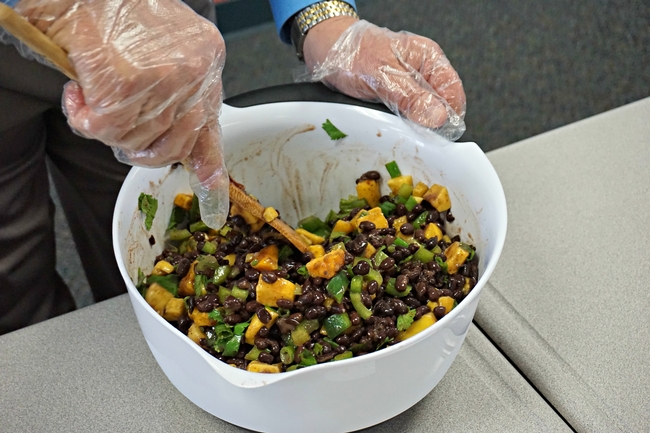
Ingredients:
- 1 15-ounce can black beans, rinsed and drained
- 2 cups peeled, pitted and diced fresh mango (about 2 small mangos)
- 1/4 cup sliced green onions
- 1/4 cup chopped bell pepper
- 2 tablespoons lime juice
- 2 tablespoons 100% orange juice
- 1 tablespoon chopped fresh cilantro
- 1/2 teaspoon chili powder
- 1/4 teaspoon ground cumin
Mix together all ingredients in a large bowl. Salad may be served right away, but is best if covered and chilled for a least 1 hour for flavors to blend.

